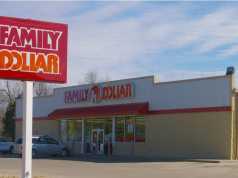OKLAHOMA CITY – June 18, 2015 – (RealEstateRama) — Not all of the damage from flooding takes place while your home or business is under water. Long after the flood waters have receded, mold and mildew can present serious and ongoing health issues.
Oklahomans impacted by the severe storms and flooding that took place between May 5 and June 4 should take steps to protect the health of their family or employees by treating or discarding mold- and mildew-infected items as soon as possible.
Health experts urge those who find mold to act fast. Cleaning mold quickly and properly is essential for a healthy home or work place, especially for people who suffer from allergies or asthma.
Mold and mildew can start growing within 24 hours after a flood, and can lurk throughout a home or business, from the attic and basement to crawl spaces and store rooms. The best defense is to clean, dry or discard moldy items. A top-to-bottom cleanup is your best defense, according to the experts.
Many materials are prone to developing mold if they remain damp or wet for too long. Start a post-flood cleanup by sorting all items exposed to floodwaters:
- Wood and upholstered furniture and other porous materials can trap mold and may need to be discarded.
- Carpeting presents a problem because drying it does not remove mold spores. Carpets with mold and mildew should be removed.
- Glass, plastic and metal objects and other items made of hardened or nonporous materials can often be cleaned, disinfected and reused.
All flood-dampened surfaces should be cleaned, disinfected and dried as soon as possible. Follow these tips to ensure a safe and effective cleanup:
- Open windows for ventilation and wear rubber gloves and eye protection when cleaning. Consider using a mask (rated N-95 or higher) if heavy concentrations of mold are present.
- Use a non-ammonia soap or detergent to clean all areas and washable items that came in contact with floodwaters.
- Mix 1.5 cups of household bleach in one gallon of water and thoroughly rinse and disinfect the area. Never mix bleach with ammonia, as the fumes are toxic.
- Cleaned areas can take several days to dry thoroughly. The use of heat, fans and dehumidifiers can speed up the drying process.
- Check all odors. Mold often hides in the walls or behind wall coverings. Find all mold sources and clean them properly.
- Remove and discard all materials that can’t be cleaned like wallboard, fiberglass and other fibrous goods. Clean the wall studs where wallboard has been removed and allow the area to dry thoroughly before replacing the wallboard.
For other tips about post-flooding cleanup, visit www.fema.gov, www.oem.ok.gov, www.epa.gov, or www.cdc.gov.
###
Disaster recovery assistance is available without regard to race, color, religion, nationality, sex, age, disability, English proficiency or economic status. If you or someone you know has been discriminated against, call FEMA toll-free at 800-621-FEMA (3362). For TTY call 800-462-7585.
The Oklahoma Department of Emergency Management (OEM) prepares for, responds to, recovers from and mitigates against emergencies and disasters. The department delivers services to Oklahoma cities, towns and counties through a network of more than 350 local emergency managers.
FEMA’s mission is to support our citizens and first responders to ensure that as a nation we work together to build, sustain, and improve our capability to prepare for, protect against, respond to, recover from, and mitigate all hazards. Follow us on Twitter at www.twitter.com/femaregion6and the FEMA Blog at http://blog.fema.gov.
The SBA is the federal government’s primary source of money for the long-term rebuilding of disaster-damaged private property. SBA helps businesses of all sizes, private non-profit organizations, homeowners, and renters fund repairs or rebuilding efforts and cover the cost of replacing lost or disaster-damaged personal property. These disaster loans cover losses not fully compensated by insurance or other recoveries and do not duplicate benefits of other agencies or organizations. For more information, applicants may contact SBA’s Disaster Assistance Customer Service Center by calling (800) 659-2955, emailing disastercustomerservice (at) sba (dot) gov, or visiting SBA’s website at www.sba.gov/disaster. Deaf and hard-of-hearing individuals may call (800) 877-8339.




